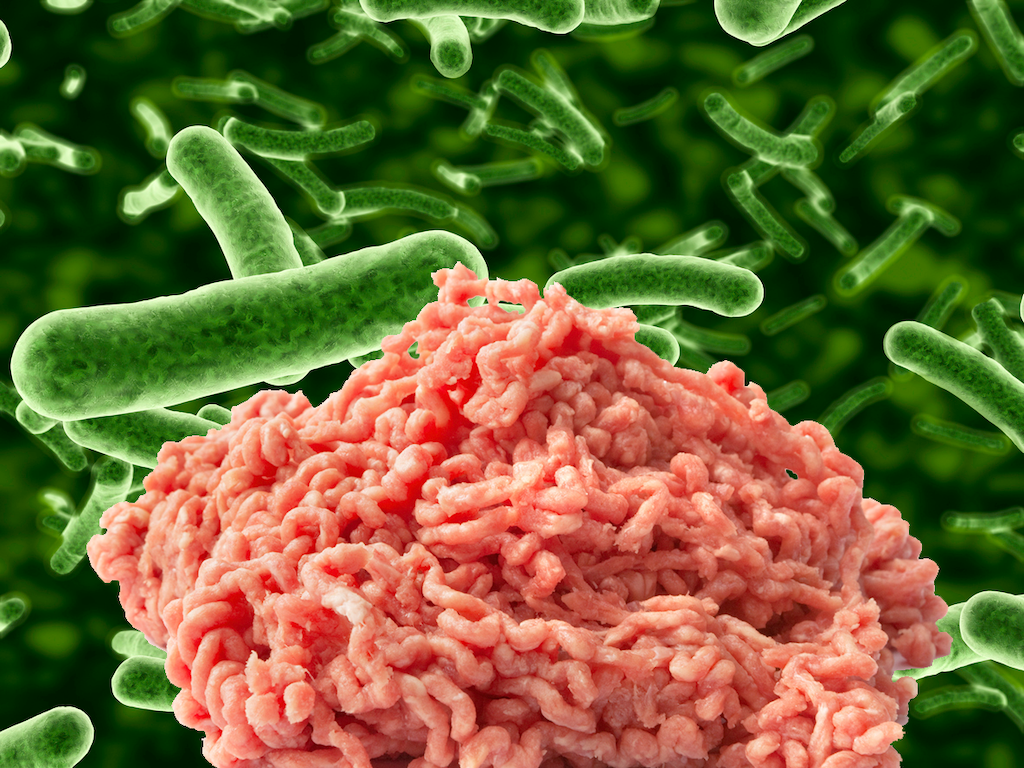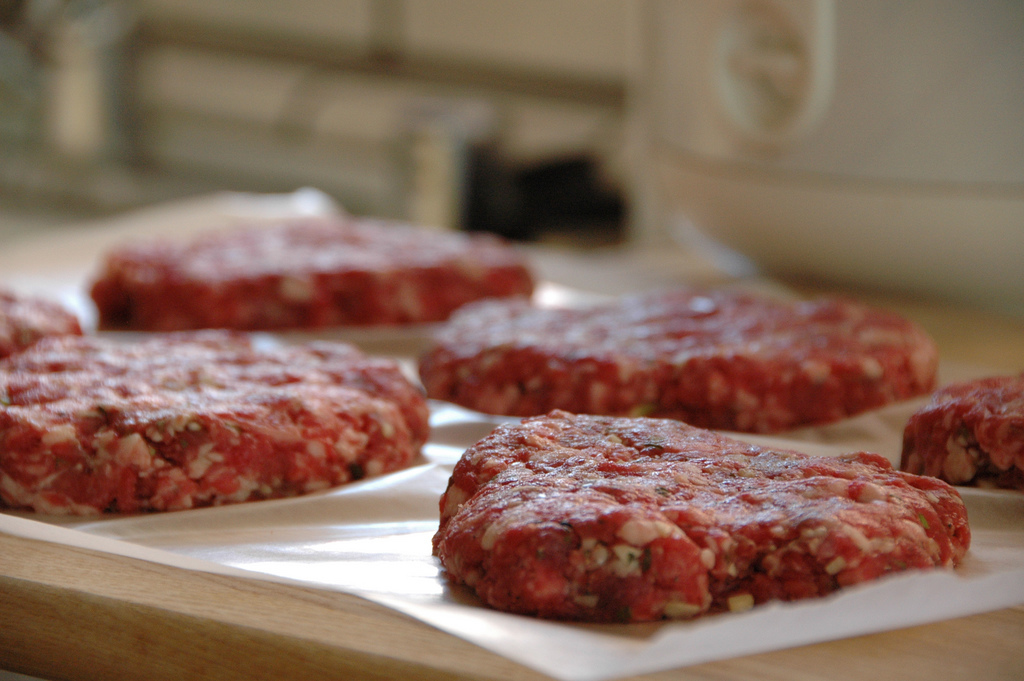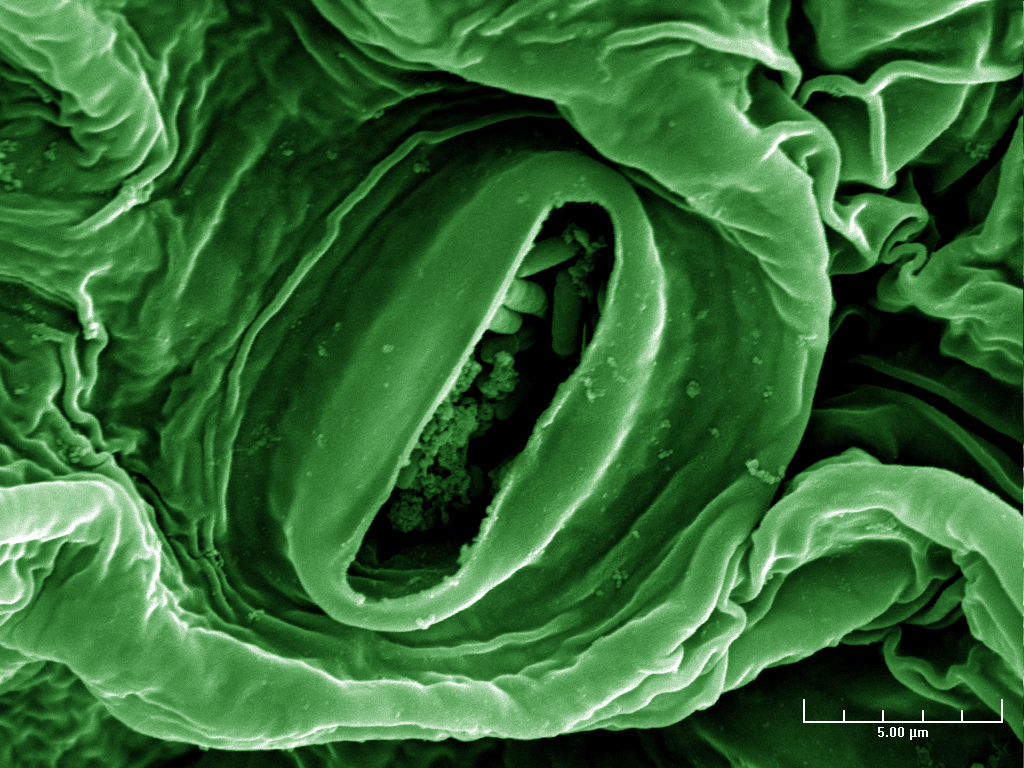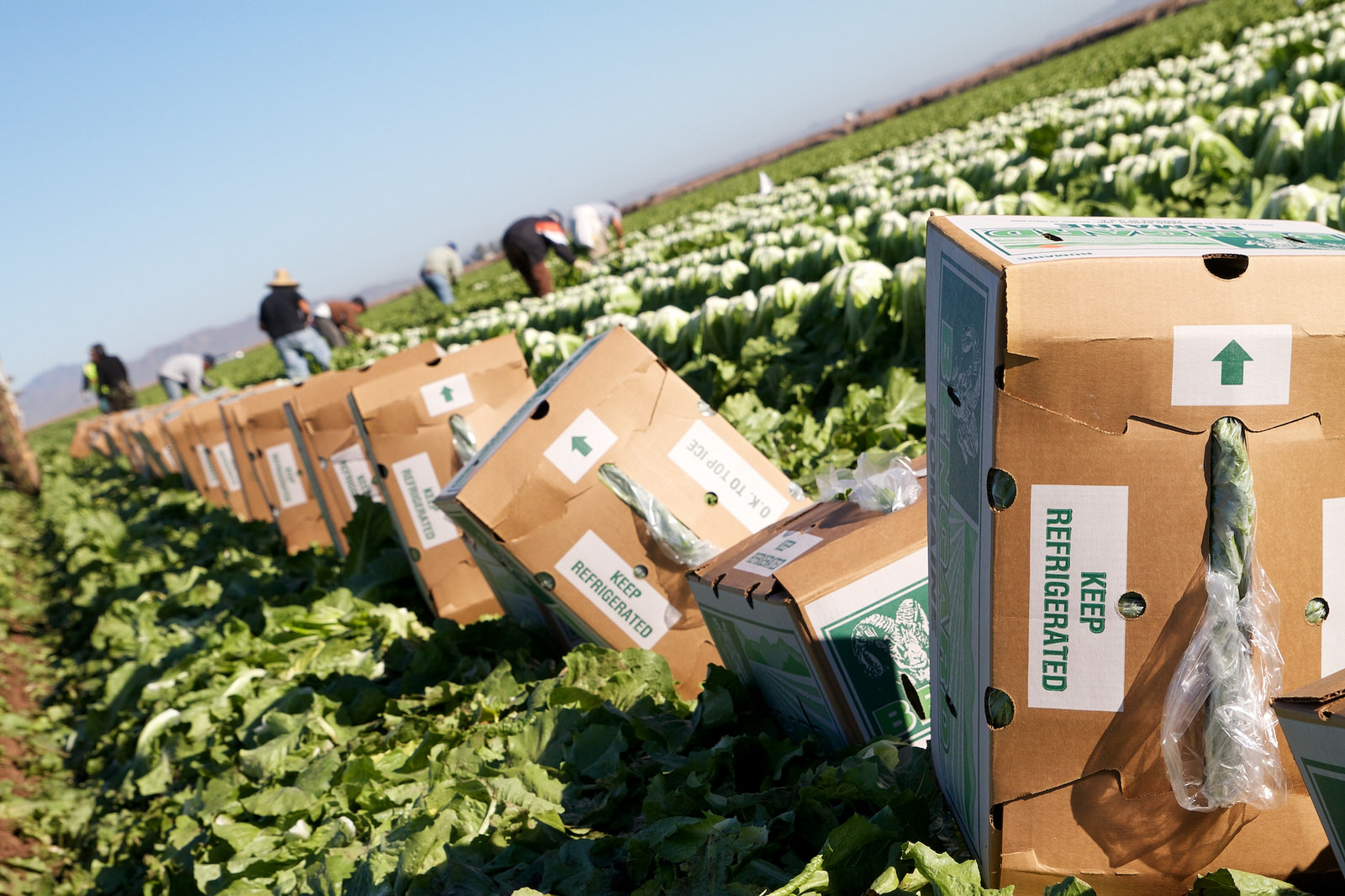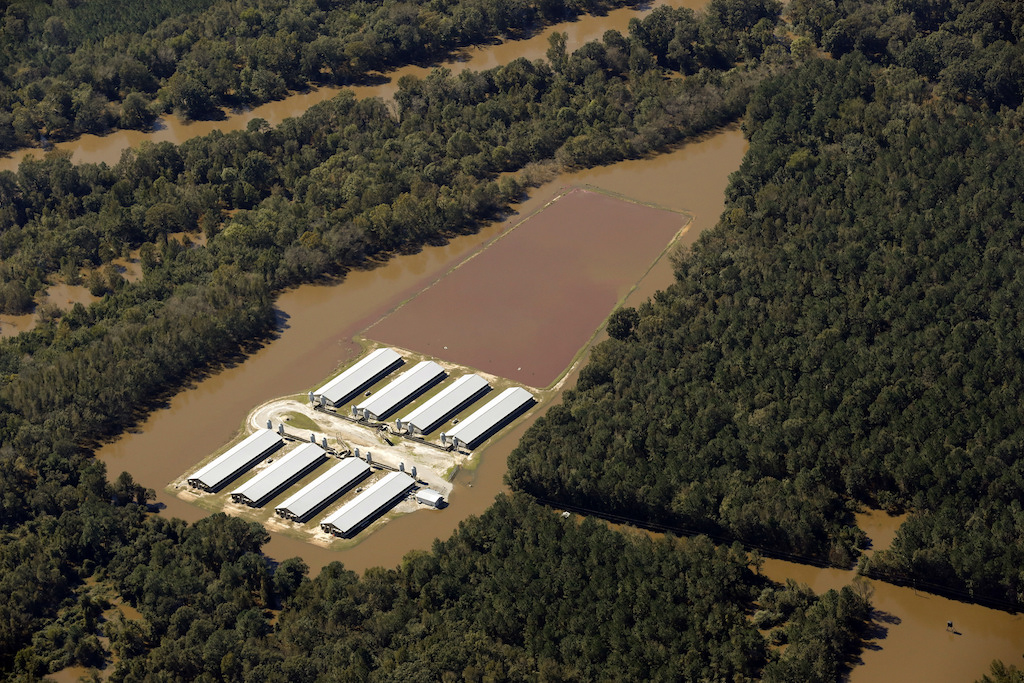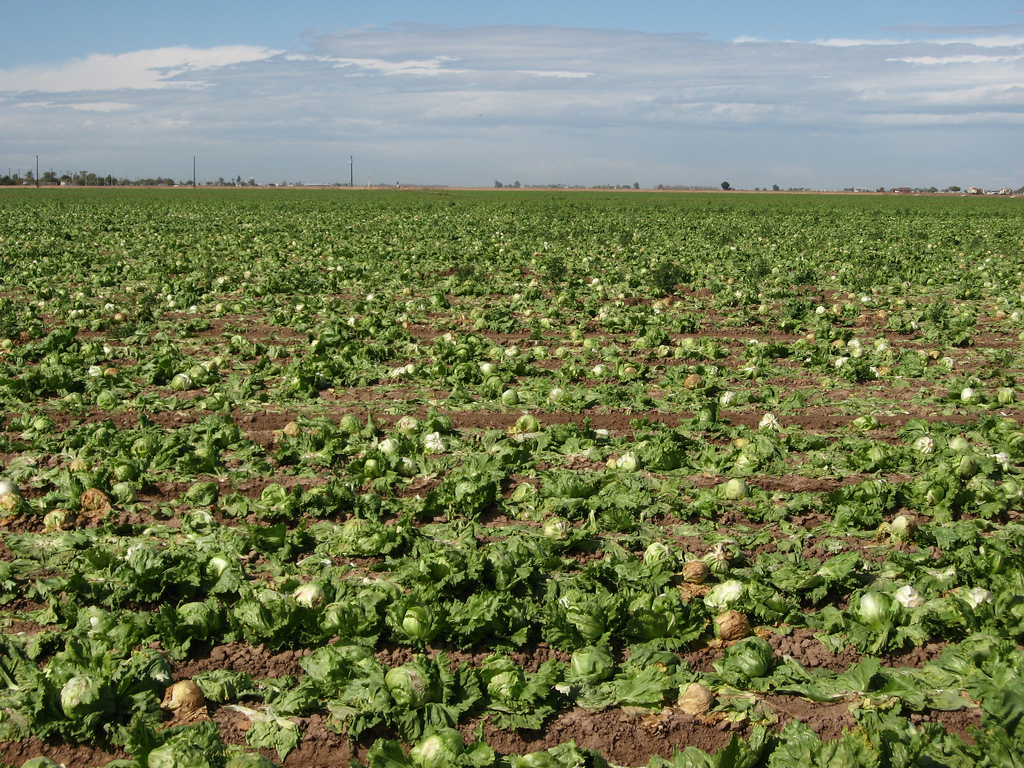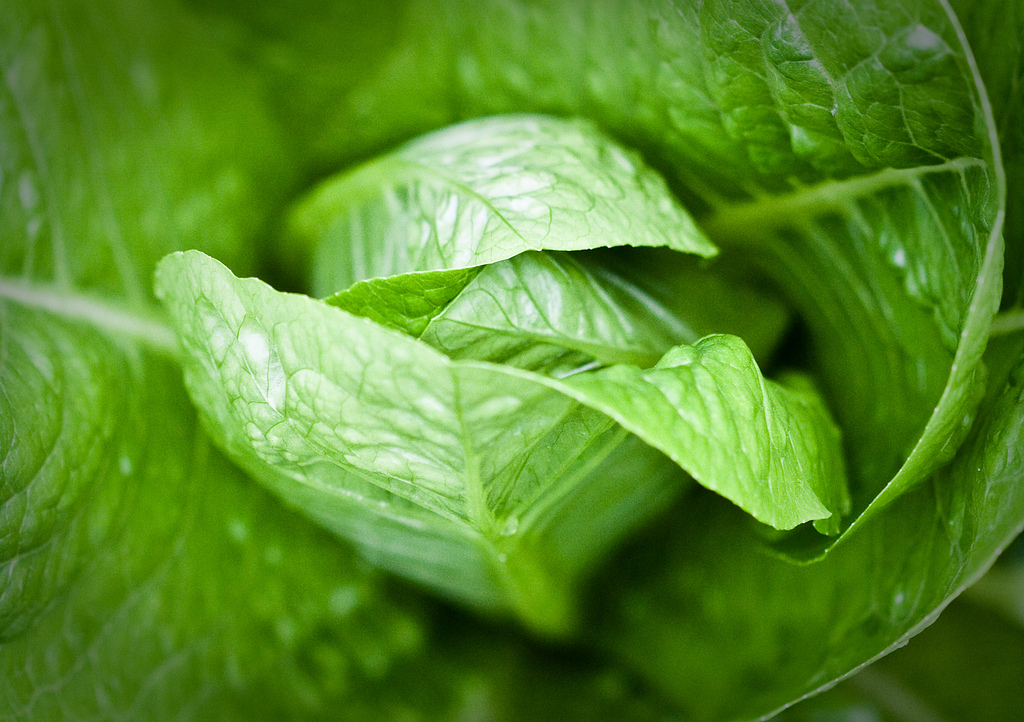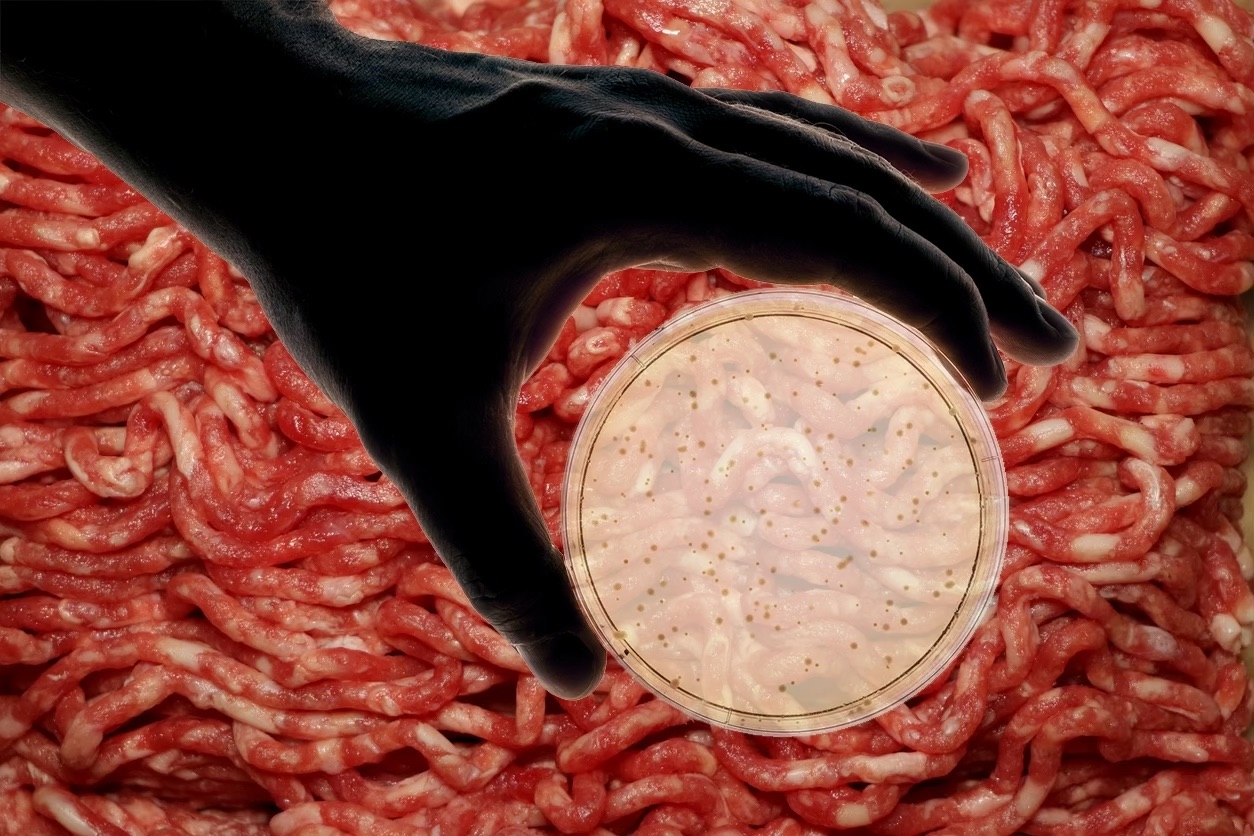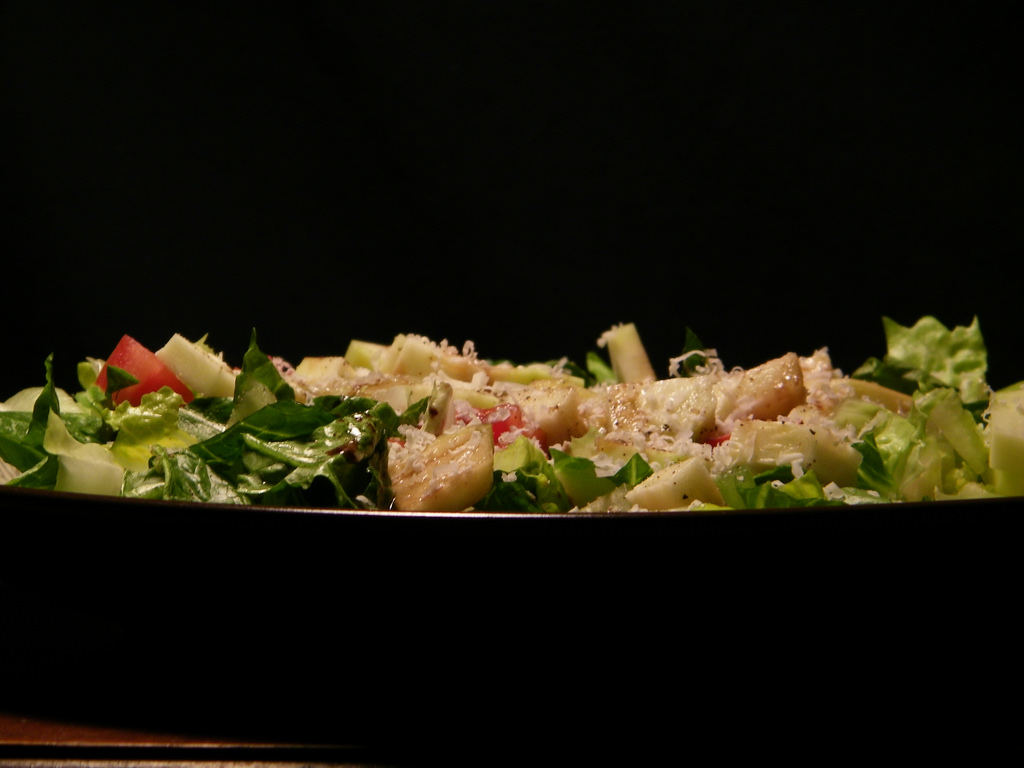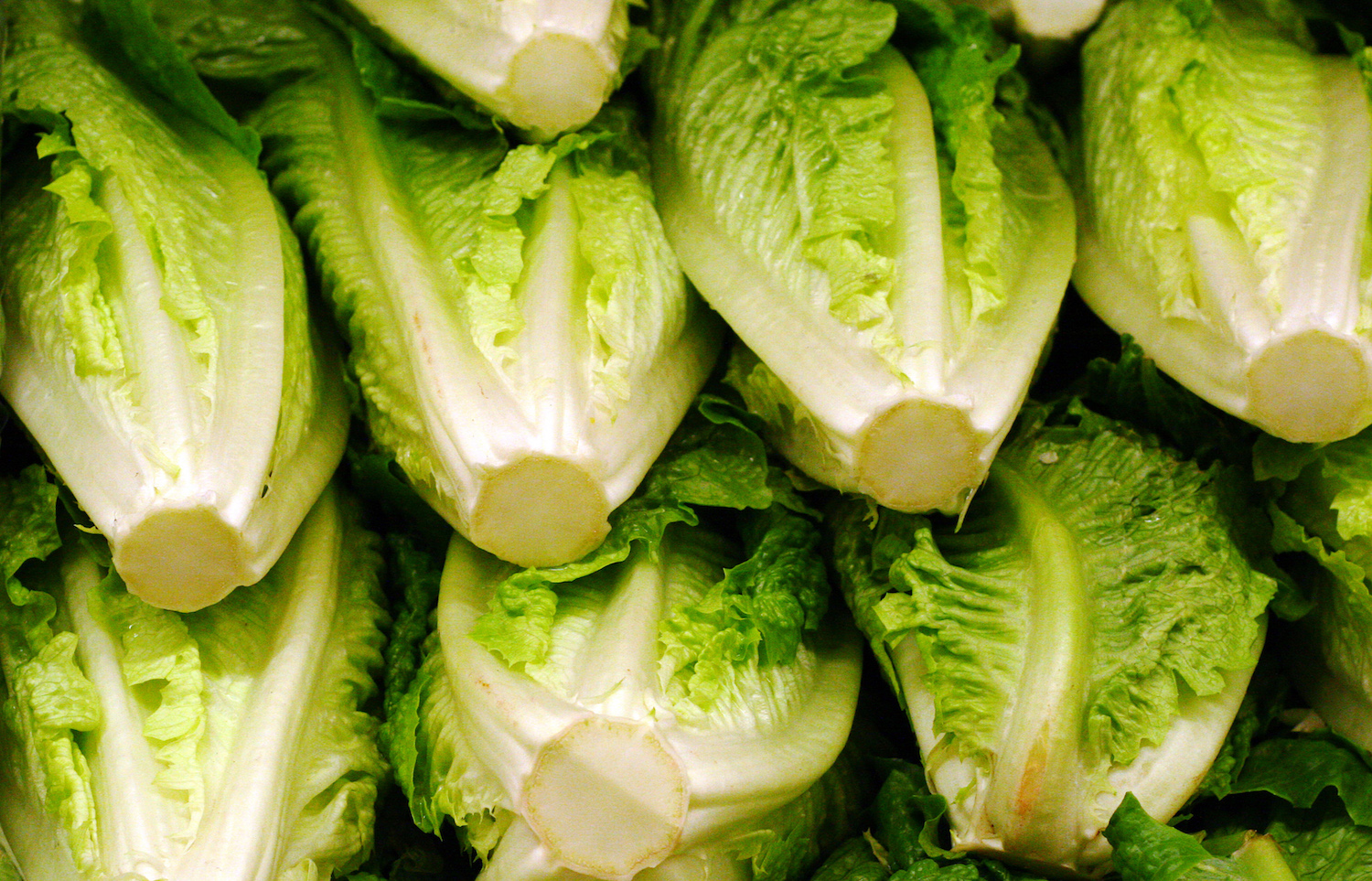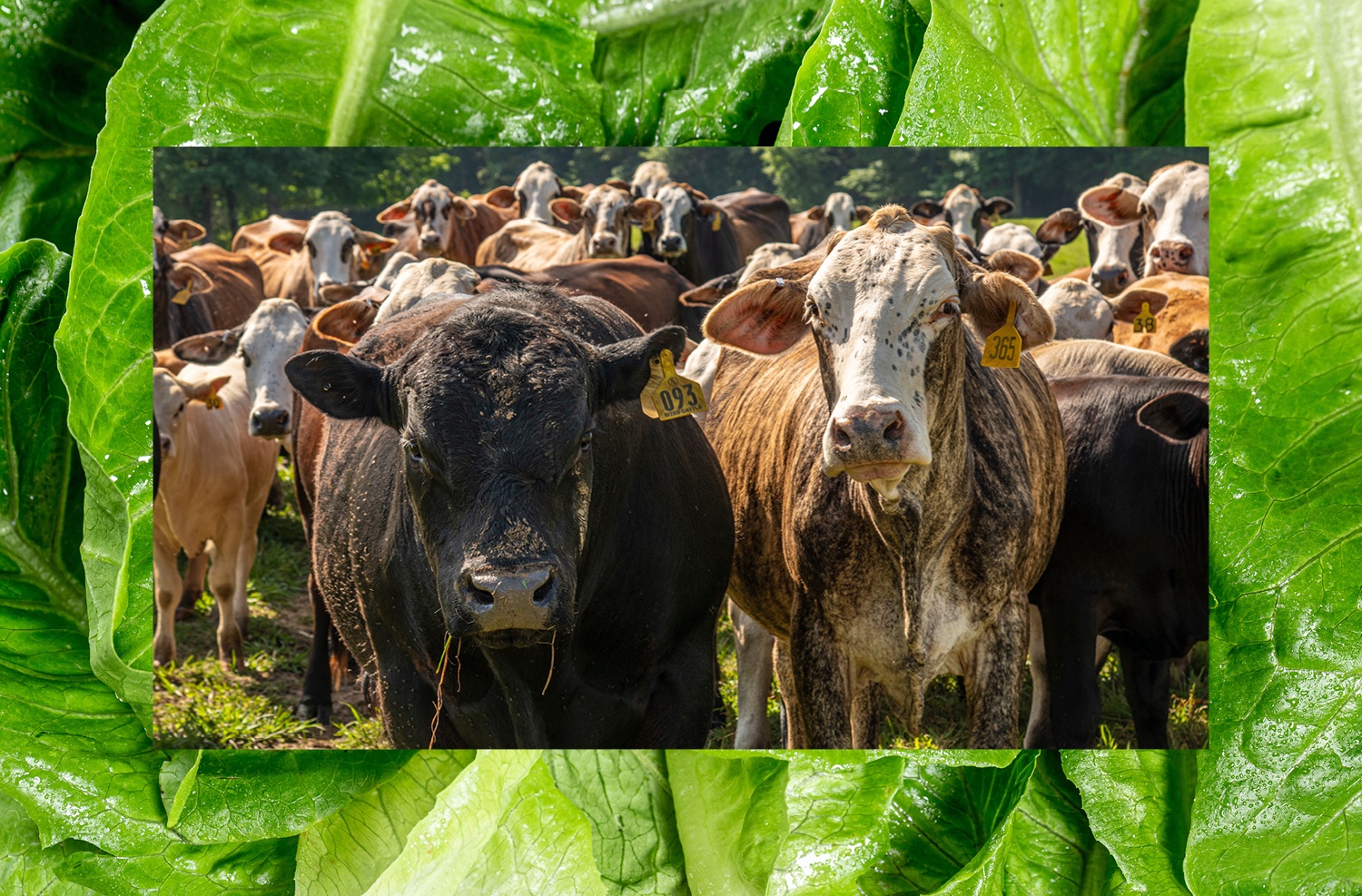
USDA Photo by Lance Cheung / Marco Verch / Graphic by The Counter
Bacteria from cow manure can make its way from the animal’s stomach, onto a lettuce leaf, and proceed to sicken people two weeks later.
Remember Thanksgiving? We were crowding airports and sharing food. Our dinner tables were buzzing with never-ending impeachment chatter. WeWork was imploding. We were blissfully unaware that the virus that causes Covid-19 was starting to circulate in Wuhan.
But at the time, a pathogen of a different sort was making all the headlines: Just days before the holiday, the Centers for Disease Control and Prevention (CDC) advised shoppers to leave romaine lettuce from Salinas, California off their Thanksgiving tables. A new outbreak of E. coli had just been confirmed. It ultimately sickened 167 people, hospitalizing 87.
This week, FDA released its findings from an investigation into that outbreak, as well as two other, smaller outbreaks. The agency found that waste from nearby cattle was a “most likely contributing factor” in contamination of the lettuce.
“It’s very common to have E. coli in cattle—and that would include beef and dairy cows.”
The November 2019 outbreak was just one more in a seemingly endless wave of leafy-green-related E. coli outbreaks dating back to 2017. But it’s not that romaine lettuce is any dirtier than other vegetables and meats we eat, said Robert Glennon, professor of law and public policy at the University of Arizona. It’s that we usually eat it raw, meaning bacteria living on the leaves doesn’t die off between the fridge and our plates.
There’s an inherent food safety risk in growing anything outside, Glennon said. Waste from deer can contaminate row crops. Bacteria in irrigation canals can make its way onto stems and leaves. But it’s becoming increasingly clear that grazing cattle near fields of leafy greens may be a particularly bad combination. “It’s very common to have E. coli in cattle—and that would include beef and dairy cows,” Glennon said. “They’re not the only animals, but their particular stomachs … allow for E. coli.” On top of that, cows produce 65 pounds of manure every day. Despite waste management regulations and farmers’ best efforts, sometimes bacteria from the four-legged E. coli factories can travel.
Food safety experts have long suspected a relationship between cattle operations and E. coli outbreaks in leafy greens. In 2018, after an outbreak in Yuma, Arizona sickened 210 people and killed five, FDA investigators traced the contamination as far as a 3.5-mile irrigation canal that supplied 23 farms. They came to no conclusions about how the water was contaminated, though they identified nearby livestock farms or wildlife as possible factors. The canal was very close to a large concentrated animal feeding operation (commonly called a CAFO), and officials suspected that livestock might have been the source of contamination. Cattle farming was also implicated in a 2006 outbreak.
While many public health and food safety advocates believe nearby CAFOs have been responsible for E. coli outbreaks, it doesn’t take 100,000 nearby cattle to spread bacteria.
What’s interesting about FDA’s findings this week is that the outbreak wasn’t linked to a CAFO. Rather, the contamination was traced to public land uphill from where cows had grazed, “far lower than the volume of what is considered a large concentrated animal feeding operation,” the agency wrote. That means that, while many public health and food safety advocates believe nearby CAFOs have been responsible for E. coli outbreaks, it doesn’t take 100,000 nearby cattle to spread bacteria. “If you can have an outbreak caused by one cow anywhere near a [leafy green] field, that’s sobering,” Glennon said.
Investigators aren’t sure how, exactly, the romaine fields were contaminated in the 2019 outbreaks. Though cattle are the “most likely contributing factor,” their manure could have reached the fields in any number of ways. The agency listed runoff, animals or vehicles traveling between the hill and the fields, and irrigation water as possible pathways for the spread of contaminants.
The agency has recommended that romaine growers test their water and add barriers, like ditches or rows of other vegetables, between their fields and grazing land. Glennon said at least one processor in the industry has adopted even stricter measures, refusing to buy romaine grown within two miles of a CAFO.
Still, farmers of leafy greens have little control over the use of land adjacent to their fields, and they may be helpless to stop the construction of a nearby CAFO, even if it does present a possible food safety concern. A 2020 leafy greens safety plan released by FDA included just two references to animal agriculture, Food Safety News reports. Rather than call for zoning regulations or more water testing, the agency said it would collect data and “provide education and technical assistance.” Experts were unimpressed.

